Story
Putting communities back in the driving seat of sustainable natural resource management in rangelands
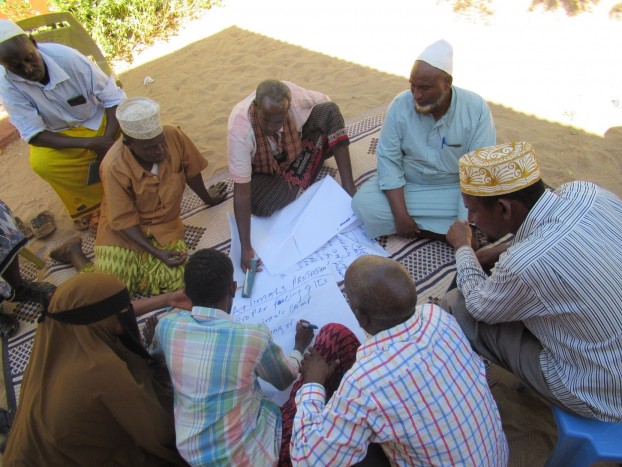
The successful introduction, adoption and implementation of participatory rangeland management systems
Building Opportunities for Resilience in the Horn of Africa (BORESHA) is a three-year EU-funded cross-border resilience project implemented by four international partners; a consortium of three NGOs – Danish Refugee Council, World Vision, CARE; and WYG, which is a private company.
The project is implemented in Mandera County in Kenya, Dolow and Beled Hawa districts in Somalia and Dolo Ado and Dolo Bay woredas in Ethiopia. This borderland is referred as the Mandera Triangle.
BORESHA is one of the regional initiatives within the IGAD region focused on building sustainable livelihoods, improving natural resource management and strengthening resilience in cross-border areas within the three countries. Similar cross-border initiatives that integrate and coordinate with BORESHA include Regional Approaches for Sustainable Conflict Management and Integration (RASMI), and Support for Effective Cooperation and Coordination of Cross-border initiatives (SECCCI) projects.
CARE, working through its Somalia, Kenya and Ethiopia country offices, implements one of the outcomes of the BORESHA project, which is aimed to enhance sustainable and equitable management of in-country and cross-border natural resources and particularly the dry rangelands and grasslands typical in the cross-border area.
The targeted cross-border rural communities comprise mainly pastoralists and agro-pastoralists who work to sustain their livelihoods from the rangelands. The key shared natural resources in Mandera triangle include transboundary communal grazing lands and surface water resources such as the Dawa, Juba and Ganale rivers.
The dry rangeland environments in Mandera Triangle have existed for thousands of years and continue to present numerous opportunities for pastoralist pasture and fodder productivity. However, sustainable utilization in the recent past has been hindered by challenges resulting from man-made and natural change processes. These change processes include changing rangelands management structures and resource use regimes, increasing land degradation, inadequate community participation and gender equity decision making and action on shared resources, as well as negative impacts of climate change such as recurrent and shortened drought cycles. At the community and local administrative organs, lack of appropriate frameworks for resource management and capacity gaps amongst resource actors exacerbate these challenges further.
In order to support the capacity of local communities and governance structures on management and utility of local natural resources, the multi-country CARE BORESHA teams trained the borderland communities and government offices on the Participatory Rangeland Management (PRM) approach. The PRM approach is new to these specific BORESHA implementation areas. However, the approach has been applied successfully at scale by CARE amongst pastoralists’ communities in Oromiya, Afar and Somali regions in Ethiopia. It is being piloted in different lowland sites in Kenya and Tanzania.
Participatory Rangeland Management (PRM) is an agri-system based approach to natural rangeland resource management aimed to strengthen and improve pastoralists’ rangeland governance systems.
Participatory Rangeland Management (PRM) is an agri-system based approach to natural rangeland resource management aimed to strengthen and improve pastoralists’ rangeland governance systems. The use of the term agri-system purposely refers to, and recognizes pastoralism as a formal agricultural based production system. The failure to recognize pastoralism as such, can be argued to be an underlining key factor in the lack of government support for pastoralists.
The system is established on a foundation of customary resource management and supports community-based leadership in rangeland resource land use planning and practice. It is supported by the Rangeland Management Council – a community-based organization set up by the community to lead the PRM process. The Rangeland Management Council includes clan leaders and elders, and involves women and youth representatives. With the support of the Council, the PRM system enables communities, supported and facilitated by government extension services, to take back the lead roles in designing and making decisions about how to manage their local natural resources.
The PRM planning process offers opportunities for negotiations between different stakeholders, for consensus on natural resources; land and water resources use. PRM provides a suitable and legitimate process of communal land and resource tenure that fits with both the priorities of pastoralists and government decision making institutions.
The role of the CARE BORESHA team is to support government officers to ensure inclusivity of the PRM system by taking into account the interests, positions and needs of all beneficiaries, actors and end-users in pastoral rangelands.
CARE BORESHA team envisions that PRM has the potential to support planning of cross border resource management, use and sharing, between the pastoralist groups within the cross-border region. Building resource management agreements will pre-empt potential conflicts over resources and contribute to re-establishing resource based relationships and inter-dependencies. Such conflict aware and sensitive approaches will be essential in building sustainable and peaceful futures for the pastoralist communities living in these areas.
How does Participatory Rangeland Management work in practice?
Participatory Rangeland Management is built on a 3 stage and 10 step process, as illustrated in the figure below:
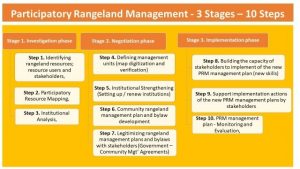 After the introductory PRM Trainer of Trainers (ToT), the CARE BORESHA team and government extension services supported and facilitated community based PRM planning workshops, involving rangeland resource users and stakeholders from the project localities. The PRM planning workshops enabled communities to negotiate and formulate PRM activity plans and PRM agreements, including resource use community bylaws. A 12-member Rangeland Management Counclil made up of both male and female decision makers (local administrative and administration government personnel and traditional elders) were formed to spearhead implementation of the rangeland plans and enforcement of the new resource use bylaws.
After the introductory PRM Trainer of Trainers (ToT), the CARE BORESHA team and government extension services supported and facilitated community based PRM planning workshops, involving rangeland resource users and stakeholders from the project localities. The PRM planning workshops enabled communities to negotiate and formulate PRM activity plans and PRM agreements, including resource use community bylaws. A 12-member Rangeland Management Counclil made up of both male and female decision makers (local administrative and administration government personnel and traditional elders) were formed to spearhead implementation of the rangeland plans and enforcement of the new resource use bylaws.
Effectiveness and successful impact of rangeland management actions
Finally, we share some early examples of the Participatory Rangeland Management plans in action and early indicators of the effectiveness and successful impact of rangeland management actions.
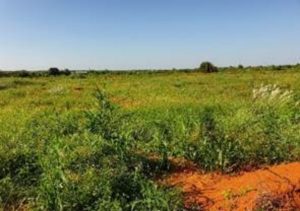
Participatory Rangeland Management – After
Effective rangeland management plans – Development of 5-year Rangeland Management Plans, covering community led resource management actions, such as: the setup of dry season grazing reserves; the setup or rehabilitation of water resources points; identification of sites for the control the invasive plant species, such as Prosopis sp. plants; identification of degraded land for rehabilitation works, through land enclosures and soil and water conservation measures. The PRM plans covered cross- border grazing system in Beled Hawa and Dolow district in Somalia, Dolo Ado and Dolo bay woreda in Ethiopia, and Mandera norther, Mandera east and Banisa sub counties, in Mandera county of Kenya.
New resource management bylaws – Community PRM agreement bylaws aligned with local customary laws, supporting better governance of their natural resources for a more resilient grazing system and pastoral livelihoods. The community bylaws provided binding codes for regulating forage utilization in grazing reserves or enclosed areas, prevention of cutting key indigenous trees for charcoal production and protection of sources of water.
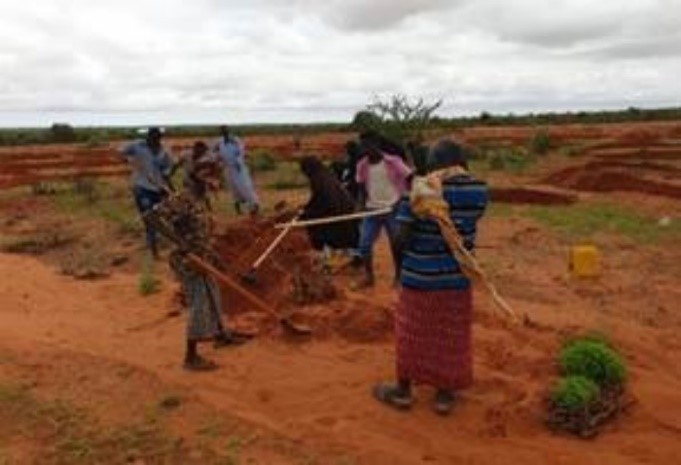
Participatory Rangeland Management – Before
Community wide actions – the Rangeland Councils have mobilized their local community members for rehabilitation of severely degraded rangelands in over 31 village sites, through soil and water conservation measures. This has enabled vegetation regeneration in hitherto unproductive lands providing access to new sources of pasture for their livestock and enhanced security of communities.
Tackling priority problems – The invasive plant species Prosopis sp. has been cleared from prime grazing areas that had been rendered unsuitable for livestock grazing. This work has re-opened these grazing areas and allowed desirable grass and other plants species to regenerate.
Use of new technology – The Rangeland Councils, through BORESHA, have facilitated community uptake of innovative technologies for alternative utilization of Prosopis sp. plants for livestock feeding and charcoal briquette production creating new livelihoods opportunities. As a result, PRM groups from 19 villages are currently utilizing the new Prosopis sp. technology.
Improved and climate adaptive management of scare resources – Communities in eight villages have established new area land enclosures for improving the growth and availability of pasture for their animals. Using the PRM bylaws, the Rangeland Councils manage access to pastures in the new enclosures. The enclosures are reserved for dry-season grazing, mainly for lactating animals kept for milk, and for calves and sick animals that cannot trek far from the village. This practice contributed to household resilience in the dry season and potentially at times of drought.

The development and maintenance of this portal is co-funded by the European Union.
